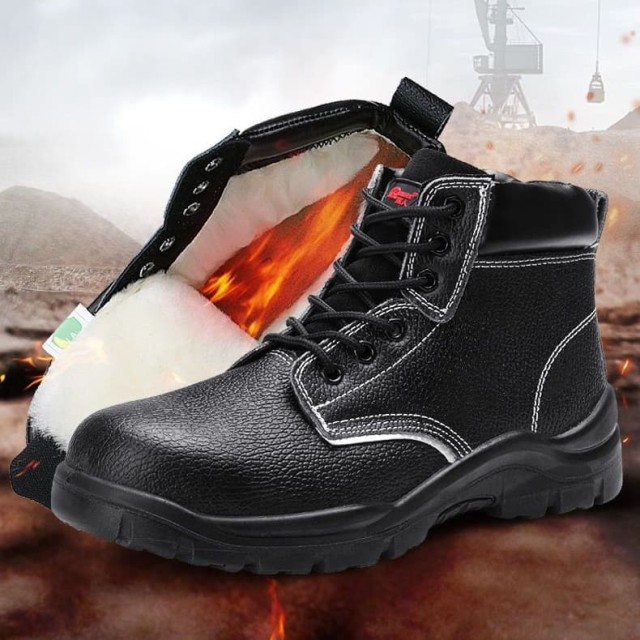Every year, workplace foot injuries cost industries millions in lost productivity and compensation claims. Yet research shows over 60% of these incidents could be prevented with proper safety footwear selection. This guide decodes how technical features like ankle support heights, material composites, and specialized soles address distinct hazards—from molten metal splashes to freezing fishery decks.
Choosing Safety Footwear for Workplace Safety Compliance
Safety footwear isn’t one-size-fits-all. The difference between adequate and optimal protection often lies in matching specific features to environmental risks.
Ankle Support and Height: When 6-Inch vs. 8-Inch Boots Matter
- 6-inch boots: Ideal for warehouses or light construction where ankle mobility matters more than extreme stabilization. Their shorter cut reduces fatigue during repetitive motions.
- 8-inch boots: Essential for uneven terrain (e.g., mining sites) or environments with rolling hazards. The higher collar stabilizes ankles against twists while blocking debris ingress.
A study of manufacturing plant injuries revealed workers in 8-inch boots had 40% fewer ankle sprains than those wearing low-cut shoes.
Waterproofing Technologies for Wet and Corrosive Environments
Modern membranes like eVent® and Gore-Tex® offer breathability while sealing out:
- Chemical splashes: Butyl rubber liners in lab boots resist acid penetration.
- Prolonged water exposure: Seam-sealed construction in fishery boots prevents cold water seepage—a key factor in preventing trench foot.
Material and Safety Standards Across Industries
Steel vs. Composite Toes: Balancing Protection and Weight
| Feature | Steel Toe | Composite Toe |
|---|---|---|
| Weight | 30-50% heavier | Lightweight |
| Protection | Highest impact resistance | Meets ASTM F2413 standards |
| Best For | Heavy manufacturing | Warehouses, airports |
Composite materials like fiberglass or carbon fiber now match steel’s protective benchmarks while eliminating metal detectors’ nuisance alarms—a game-changer for airport baggage handlers.
Heat Resistance and Sole Durability in Extreme Conditions
- Foundry soles: Withstand 572°F+ molten metal contact via vulcanized rubber compounds.
- Oil rig outsoles: Nitrile blends resist degradation from hydrocarbons while maintaining grip on slick surfaces.
Case Studies: Matching Footwear to Real-World Scenarios
Foundry Work: Defending Against Molten Metal Splash
When a Midwest foundry switched to ASTM F2413-compliant boots with metatarsal guards and heat-reflective tongues:
- Metal splash injuries dropped by 70% within a year.
- The integrated heat barrier prevented 100% of burn-through incidents previously caused by traditional leather boots.
Fisheries: Anti-Slip and Cold-Weather Adaptations
Alaskan crab fishermen using boots with:
- Vibram® Arctic Grip soles: Reduced slip-and-fall rates by 55% on icy decks.
- Neoprene insulation: Maintained toe temperatures above freezing during 18-hour shifts in -30°F winds.
Ready to Equip Your Workforce with Precision-Engineered Safety?
3515 partners with distributors and bulk buyers to deliver industry-tailored footwear solutions—from chemical-resistant lab shoes to electrically insulated lineman boots. Let’s collaborate to reduce your team’s injury risks while enhancing all-day comfort. [Contact our specialists] to discuss your hazard-specific needs.
Products You Might Be Looking For:
Explore steel toe work boots for heavy-duty protection
Discover customizable safety footwear for industry-specific needs
Related Products
- Wholesale Customizable Suede Safety Boots - Puncture-Proof with Velcro Closure
- Wholesale Durable Camo Canvas Shoes with High-Traction Rubber Soles
- Puncture-Resistant Velcro Safety Boots for Wholesale & Custom Manufacturing
- Customizable Anti-Smash Safety Boots for Wholesale & Private Label Manufacturing
- Wholesale Safety Footwear Manufacturer for Bulk & Custom OEM Orders
Related Articles
- How to Choose Work Boots That Balance Safety, Comfort, and Durability for Your Job
- Matching Men’s Work Shoe Safety Technologies to Workplace Hazards
- How to Extend Work Boot Lifespan: Science-Backed Care for Safety & Savings
- How Safety Work Boots Engineer Protection: Features and Standards for Targeted Hazard Mitigation
- Work Boots vs. Western Boots: How to Choose the Right Footwear for Labor Safety



















